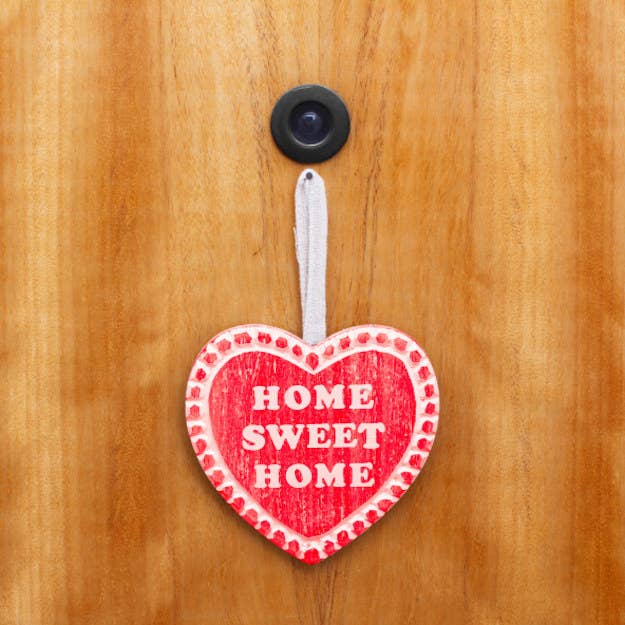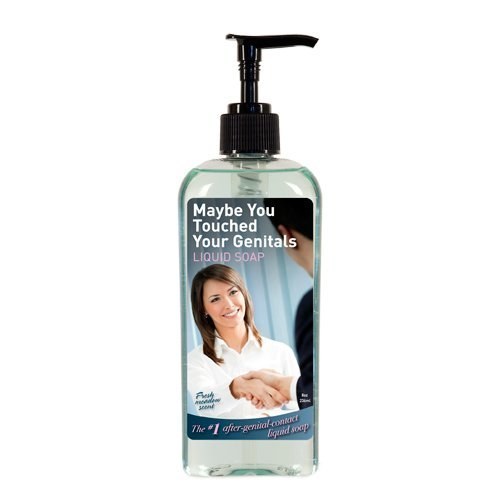WHERE THE GERMS ARE, Part 1: Inside your house

1. The kitchen sink.

2. That dish sponge, though.
There's another reason why your kitchen is so filthy: "Your sponge, dishcloth, or common brush you use to wash your dishes … those environments are perfect sites for germs to grow," Reynolds says. "Studies at the [University of Arizona] found 60% of home dishcloths tested positive for influenza (around eight samples collected); 32% for MRSA (38 samples collected); 10% for Salmonella; [and] 32% for E. coli," she says.
Different studies show different percentages, but Reynolds says the evidence is clear: Dishrags in your kitchen are total germ magnets. And even more troubling is that we often use those towels to "clean" our counters, which means that rather than cleaning up after ourselves, we're increasing the odds of cross-contamination in the kitchen.
The solution: You can toss your dish-towels in the laundry between each use. You can let them dry out completely between uses, which helps kill off some of the bacteria. Or (and this is the most effective/easiest thing for people) you can dip your rag in a sink with a dilute bleach solution, Reynolds says.
3. And also the bathroom hand towel.
The same general rules apply here: Germs love moist environments, and thrive on shared towels of any kind (whether in the kitchen or the bathroom). "If you utilize a shared hand towel in the bathroom, you are likely sharing more than just the towel," Reynolds says. Sharing things like MRSA, for instance, or the flu virus.
The solution: "Face and hand towels should be single use, dried between use and laundered using the sanitizing cycle on your washing machine," Reynolds says.
4. Within three to six feet of your toilet.
"When you flush the toilet, studies show it can spray between three and six feet in every direction," Reynolds says. That means that anything in the splash zone could potentially be contaminated by... whatever you put in the toilet. "Certainly fecal matter, E. coli, if someone is ill with salmonella infection — anything that can be fecally transmitted can be transmitted form those sprays," Reynolds says.
The solution: Keep your toothbrush in a drawer or cabinet, and frequently wipe down all surfaces with a disinfecting wipe.
5. That bar of soap.

6. In your washing machine.
WHERE THE GERMS ARE, Part 2: At your workplace

7. The break room.
8. Bathrooms.
After the break room, the virus spread to the common bathrooms. Worth noting here that pretty much every bathroom, whether it's at work or at home or in public, comes with a lot of germs. Something that might make you feel better, though: Reynolds says it's probably fine to go ahead and sit on a public toilet seat. Really! Read all about it.
The solution: You've totally got this, because you've been doing it forever: Wash your hands well, and then use a paper towel to open the bathroom door as you leave.
9. Your computer, keyboard, mouse, and office phone.
By the end of four hours, the virus had spread to peoples' individual cubicles and offices, and was now present on all the obvious culprits: anything that people touched.
The solution: Grab those disinfecting wipes. You can also follow these incredibly detailed instructions from PC World on how to clean your keyboard.
WHERE THE GERMS ARE, Part 3: In your car
10. Car seats. Germs all over car seats.
11. The steering wheel, dashboard, and seatbelt.
Beyond the backseat and anywhere that children come into contact with, Reynolds says to also be mindful about any "high-touch" surfaces in your car. Think of where you're most likely to put your fingers and hands when you use your vehicle: steering wheel, dashboard, seatbelt buckle, glove compartment, door handles, and locks... you get the idea.
The solution: "Just wipe down your steering wheel and other high-touch areas with a disinfecting wipe," Reynolds says.
WHERE THE GERMS ARE, Part 4: On your stuff
12. Your cell phone.
13. Your purse or backpack.
And not just the handles — think of where that purse has been before you plop it on your kitchen table when you get home from work. "We put purses and backpacks everywhere," Reynolds says. Maybe you put your purse on the floor at work. Or you rest your backpack on the subway platform so that you don't have to hold it. In both cases, your pack will definitely pick up all sorts of fun germs.
The solution: "Leave them by the door, or hang them on a hook when you get home," Reynolds says.
14. Your shoes.
If this doesn't scream "I'm a germaphobe/neat freak" I don't know what does. I have a serious problem.
"The bottom of our shoes definitely track in dirt and germs and other contaminants," Reynolds says. You've likely visited households where the rule is to leave your shoes at the door — well, there's definitely something to that. "The bottom of your shoes will definitely transmit germs," she says.
The solution: Implement the rule in your own house, and enforce it. "Especially if you have children at the crawling stage, it's a good idea to leave your shoes at the door," Reynolds says.
Now for some good news.
How to wash your hands RIGHT:
Use soap and warm water for about 20 to 30 seconds, Reynolds says. Spend most of that time lathering up and rubbing your hands together, and only the end of the time rinsing the soap off. "I do 20 seconds of lathering, and then however long it takes to rinse," Reynolds says.
Also important: Make sure to really scrub, and don't miss any spots. That means get under your fingernails, in between your fingers, underneath any jewelry, and even an inch or so up your wrists. "Go up beyond where you wear your watch," she says, "because that area's involved in surface contact and germ transmission" — just think about how you may rest your wrists against your desk when you're typing at your computer, for instance.
